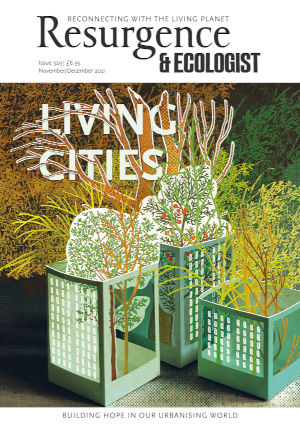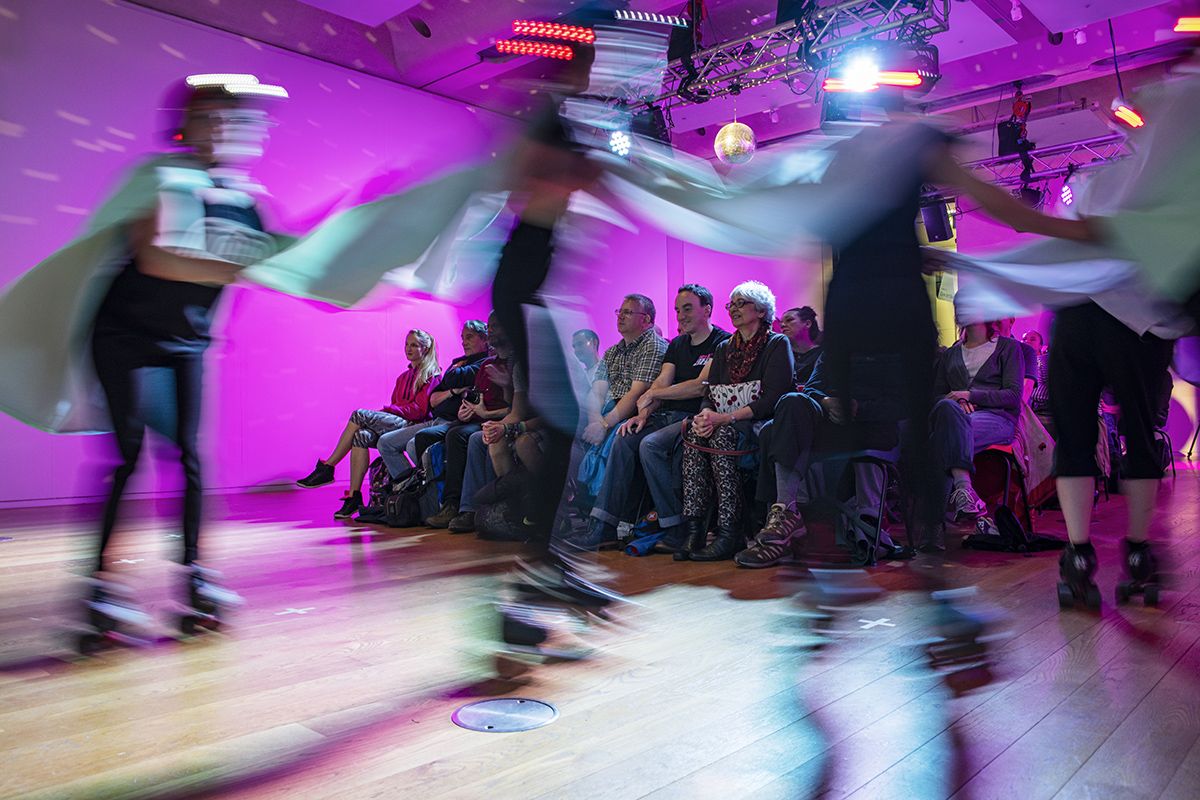The question of the relationship between art and politics, or between art and activism, is a perennial one. It’s something I’ve long pondered, especially since I became more active in campaigning in 2009. That was the year after I moved to Glasgow. The UK was dealing with the aftermath of global financial meltdown, and it was the run-up to the UN climate summit in Copenhagen (COP15). I was halfway through my master’s in Fine Art at Glasgow School of Art and so had the time to study these events and start to make the connections between the social, economic and environmental crises that were unfolding around us. It was this period of reflection that spurred me to action.
It became clear that reducing greenhouse-gas emissions had to be our utmost priority, but everywhere I looked I saw barriers preventing people from living more sustainable lives. Nowhere was this more apparent than in our public transport network. Since the deregulation of buses and the privatisation of trains in the 1980s and 1990s, services had deteriorated, and fares had skyrocketed way beyond inflation. It was often cheaper to fly or drive than to take the train, which was a disaster for the climate. We urgently needed to reframe how public transport was seen – not as a way of generating private profit for shareholders, but as a key public service integral to our fight to reduce emissions. Why were none of the main political parties making the case for our railways to be brought back into public ownership so that services could be upgraded and fares slashed? I felt compelled to start a movement demanding just that.
And so Bring Back British Rail was born. From my studio in the Barnes Building at Glasgow School of Art I began my fledgling steps as a public transport campaigner. At that time, I saw all this activity as a critique of art. Echoing the sentiment of Polish artist Artur Żmijewski, I felt that art was “too weak to present political demand”, and that the urgency of the climate crisis demanded more direct action. And so began my new dual life of artist and activist, splitting my time between the two. Of course my artwork got more political as well, but I always saw it as a counterpoint to my activism, which I felt should be kept quite separate.
This came to a head in 2016 when I devised The Glasgow Effect project, which later became the subject of my book. Couching it as a ‘durational performance’, I aimed to slash my own carbon footprint for transport to zero by refusing to leave Glasgow’s city limits or use any vehicle except my bike for a whole calendar year. It would be a real-life experiment in ‘thinking globally and acting locally’: an opportunity to focus my attention on the place where I lived, and in doing so to localise my activism.
The project sparked controversy at the time because of the funding it received from Creative Scotland (a £15,000 grant for the year) and the provocative way I’d chosen to frame it (see The Glasgow Effect on page 28). But the framing was deliberate. I wanted others to start to make those same connections between social, economic and environmental injustices in our city and society and falling levels of wellbeing. By putting my own lifestyle under the microscope, I was able to make visible the connections between literal and social mobility; between class and carbon footprint. For it’s the wealthiest people who travel the most, cover longer distances and are doing by far the most damage to our environment.
As the year progressed I began to realise that massive inequalities existed even within our public transport network. Railways are predominantly used by wealthier people making longer trips, and receive far more public subsidy per capita, whereas local buses make up three-quarters of all journeys on public transport and are predominantly used by people on low incomes, women, young people, elderly people and people with disabilities. Yet for more than 30 years our buses have been completely overlooked. I needed to refocus my attention – to put less emphasis on renationalisation of rail, and more on remunicipalisation of buses as central in shaping more equal, sustainable and connected cities. So I helped to launch a new local public transport campaign, Get Glasgow Moving, demanding that our region’s public transport network be brought back into local public ownership and control.
As I made it through the year and out the other side, I found my role starting to evolve. The activism I had always separated out from my creative work became more central. Get Glasgow Moving and the other local projects and campaigns I’d begun work on in 2016 started to take over more and more of my life. I had far less time or inclination to make any art. I also knew that if I did, there would have to be a much greater synthesis with my activism. Whereas the controversy around The Glasgow Effect had angered many working-class people who should have been allies – accusing me of going on a ‘poverty safari’ – I knew that whatever I did next would have to bring everyone on board.
In autumn 2018 I received an invitation from Manchester Art Gallery. It coincided with learning about the new Better Buses for Greater Manchester campaign, which was getting off the ground to demand that Manchester become the first UK city region to commit to reregulating its bus network. I decided to use the platform offered by the gallery to create awareness for the campaign, so I devised a celebratory piece of agitprop called Bus Regulation: The Musical. Inspired by the 1980s hit musical Starlight Express, which I remember seeing as a small child, my musical would use performers on roller skates to tell the story of public transport policy in Greater Manchester since the 1960s. It was a fun, family-friendly way of visualising this important history in order to make the case for reregulating buses now. The only people who could possibly be annoyed by it were the billionaire bus company bosses (and perhaps Andrew Lloyd Webber!).
Two years on, the campaign had succeeded, with mayor Andy Burnham announcing the historic decision to proceed with reregulation in March 2021. This will deliver the world-class, fully integrated public transport network the region needs to meet climate targets, reduce inequalities and improve everyone’s quality of life. It sets a precedent for other cities to follow, and follow they must. The Better Buses for West Yorkshire campaign is making great strides in the Leeds city region, and Liverpool’s combined authority has also concluded that reregulation looks like the best option. In the run-up to the local elections in May 2022 I hope to bring the musical home to Glasgow – to synthesise with my work with Get Glasgow Moving – and ensure that our city can also take back our buses!
Join Ellie to discuss her book The Glasgow Effect: A Tale of Class, Capitalism and Carbon Footprint (Luath Press) for our Resurgence book club at 7pm on 15 December. www.resurgenceevents.org








